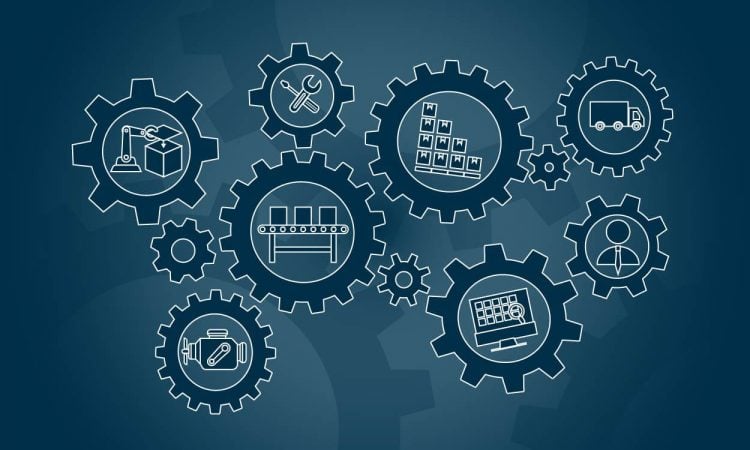This is part 1 of a 5-part series about digital manufacturing called Embracing the Power of the Next Industrial Revolution. This blog series explores the different challenges throughout the product lifecycle and how to “go digital” in Industry 4.0.
In today’s manufacturing climate, leadership teams are challenged to lower costs, shorten design cycles, attain productivity gains, and reduce their workforce. A quick look at industry news proves that manufacturers are rapidly looking for new strategies to achieve these goals:
- Ford recently announced that it was in the early stages of re-organizing the global work force and is aiming to achieve $25.5 billion in cost reductions by 2022.
- Survey data from Jabil says that over half of auto manufacturers agree that product development cycles have shortened and 68 percent now have a go-to-market expectation of under two years.
- 40 percent of companies say that meeting consumer demand is why they are pushing to shorten design cycles.
Companies are finding new ways to achieve these goals through digital manufacturing. The new wave of Industry 4.0 can transform today’s business processes and models into digital workflows. In fact, one survey from UI Labs found that 97 percent of CEOs say that digital innovation is key to future performance, and 77 percent report a boost in financial results from collaborative innovation.
To “go digital,” a company must embrace digital manufacturing as an organizational change effort and not simply implementing new tools and innovations. Companies require a comprehensive, enterprise-wide approach to digitalization—from product design to supply chain to production and manufacturing—to ensure OEMs can best achieve their business goals.
WHAT IS DIGITAL MANUFACTURING?
Unfortunately, our industry does not have a single, conclusive definition of digital manufacturing. Based on my two decades’ of experience in product lifecycle management (PLM) and digitalization approaches, I define digital manufacturing as an engineering process and enterprise-wide approach to managing a product throughout the lifecycle using a fully digital product definition. The approach allows an enterprise to design and manufacture a product in significantly shorter time with more transparency and collaboration throughout the enterprise.
A common misconception with digital manufacturing—and Industry 4.0 at large—is believing that leveraging digital technology is how organizations transform into a digital enterprise. However, technology adoption is only one facet in a much larger initiative. Companies must develop a digitalization strategy — a big-picture evolution of adopting digital systems, formalized engineering workflows, and ways of designing and thinking about problems that inform the entire enterprise. For many, this is a new way of doing business which requires organizational change and enthusiastic participation from the entire company—from executive management to shop floor technicians.
THE IMPACT OF DIGITAL MANUFACTURING ON SUPPLY CHAIN COLLABORATION
There is significant benefit for organizations that successfully implement a comprehensive digital strategy. IDC predicts that by 2020, manufacturing and supply chain organizations who analyze all relevant data and deliver actionable information through digital means will achieve $430 billion in productivity gains over their less analytically-oriented peers.
This productivity gain is facilitated by the ease of collaborating throughout the enterprise. Digital manufacturing connects internal teams and external entities, including suppliers and partners. Enterprise leaders are becoming more aware of the importance of digital transformation and are receptive to the possibilities of digital manufacturing. One survey of 337 of the largest global manufacturing organizations found that 75 percent of executives described digital transformation of the supply chain as important.
4 CHALLENGES WITH DIGITAL MANUFACTURING
Despite the importance of digital transformation, only 5 percent of global manufacturers are satisfied with the progress so far. And, 70 percent of manufacturers can’t maximize the outcome of digital transformation due to outdated business processes and technology. When considering the full extended enterprise and what is needed for digital transformation, each step of the product development process has unique challenges to overcome:
- Lack of clear strategy for streamlined digital product design
- Barriers for sharing data with external collaborators
- Traditional factory processes limit success in a modern world
- Increasing cost of labor and a skills shortage
Although the research may seem daunting, the opportunities made available in Industry 4.0 promise to help organizations “go digital” in product design, supplier collaboration, smart factories, and closing the skills gap. The transformation into digital manufacturing can provide truly unique and innovative improvements to the business process. This blog series will explore each of these areas in depth and make recommendations for how to truly embrace digital manufacturing.


COMMENTS